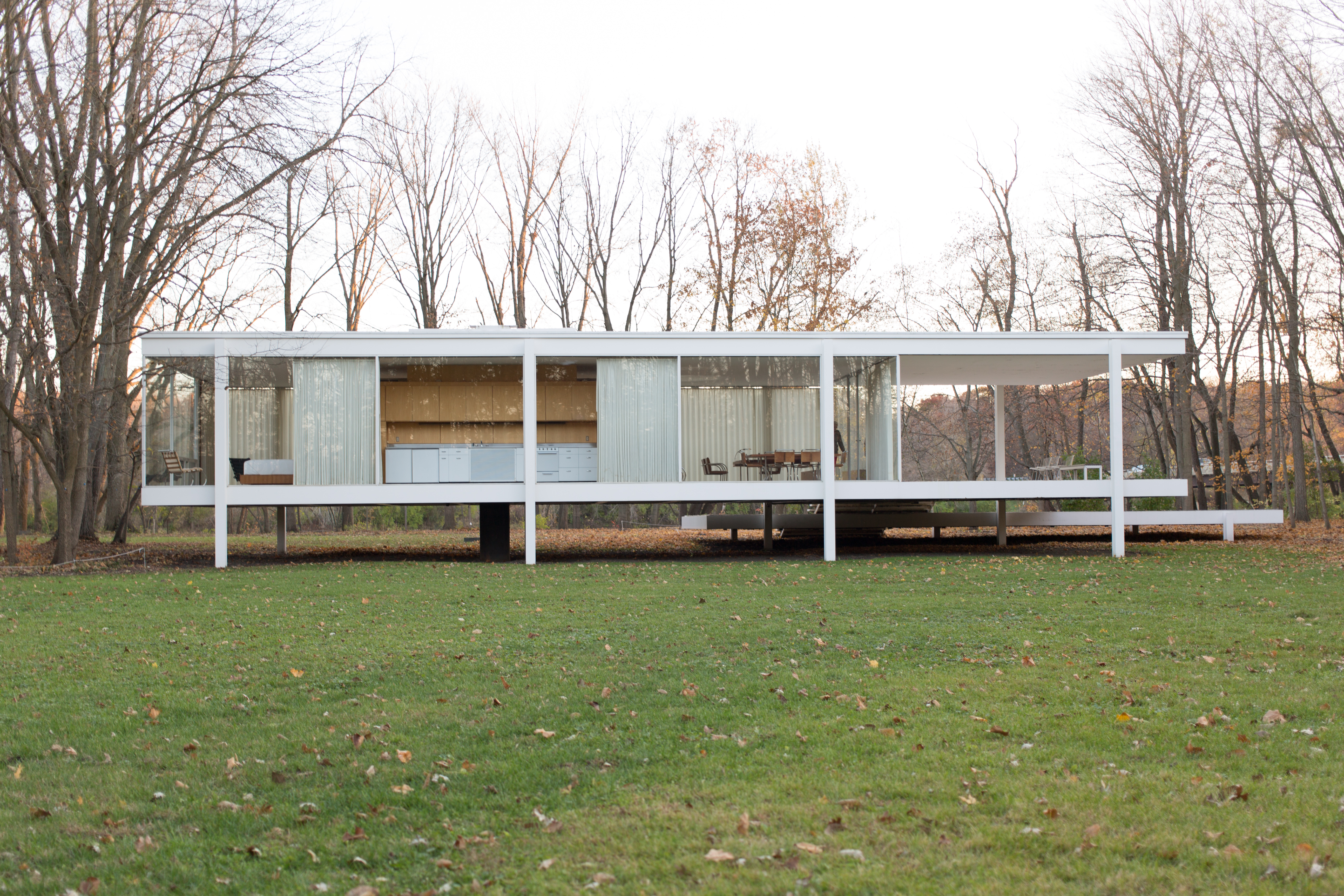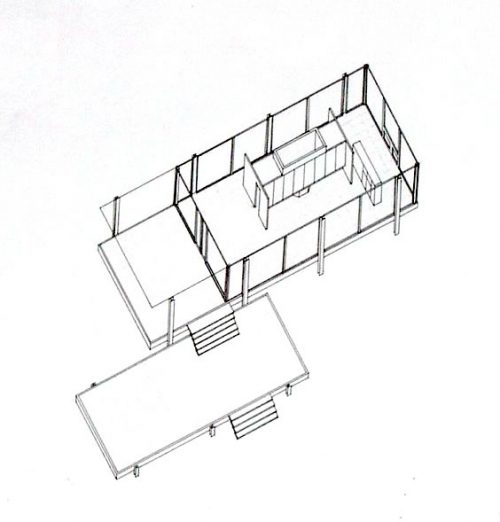Table Of Content

Although the house was built to resist floods in 1951, building in the surrounding area has caused higher flood levels in recent decades. In many ways also, Mies van der Rohe was able to realize spatial and structural ideals that were impossible in larger projects, such as the Seagram Building. For example, the I-beams of the Edith Farnsworth House are both structural and expressive, whereas in the Seagram Building they are attached to exterior as symbols for what is necessarily invisible behind fireproof cladding. In addition, the one-story Edith Farnsworth house with its isolated site allowed a degree of transparency and simplicity impossible in the larger, more urban projects.
Modernism Road Rally Tour of Homes Things to do in Chicago - Time Out
Modernism Road Rally Tour of Homes Things to do in Chicago.
Posted: Tue, 09 May 2023 07:00:00 GMT [source]
Frida Kahlo Museum
This freely available resource empowers the public with authoritative knowledge that deepens their understanding and appreciation of the built environment. A connection to the Rural Midwest and an understanding of why Edith Farnsworth built such an important modern house, how and where she did. Our visitors from Europe, Asia, and even the Americas often comment how large and open the landscape feels this far west of Chicago and certainly that attracted Dr. Farnsworth and her architect, Mies van der Rohe. Our increasingly urbanized lives make reconnecting to nature more important now than ever before. Visitors may come to see the house but come away with a deeper understanding of place and purpose.
National Trust for Historic Preservation
Revisiting Farnsworth House, a Masterpiece of Modern Architecture - WTTW News
Revisiting Farnsworth House, a Masterpiece of Modern Architecture.
Posted: Thu, 08 Aug 2019 07:00:00 GMT [source]
He held it until 2003, when it was auctioned at Sotheby’s and purchased by the National Trust for Historic Preservation, which offers public tours. One of the most famous residences in modern history, a glass and steel marvel that seems to float above its site, the Edith Farnsworth House had been legendary in the public imagination long before it could be widely accessed. This book charts the house’s original design by Mies van der Rohe and periods of neglect, flooding, and new ownership by Lord Peter Palumbo. Now publicly accessible and celebrating twenty years of being owned and administered by the National Trust for Historic Preservation, this icon of modern architecture commissioned by client and patron Edith Farnsworth now gets its due. The Edith Farnsworth House is one of the most prized residences in modern architectural history, whose sometimes fraught history culminates in its publicly accessible life today. The extensive use of clear floor-to-ceiling glass opens the interior to its natural surroundings to an extreme degree.
The doctor’s weekend retreat
A complex of designed, natural, and agrarian landscapes, it conveys a sense of the rural Midwest to visitors from around the world. Indeed, the now-famous house would not exist if the site hadn’t first inspired Edith Farnsworth and her architect, Mies van der Rohe, and later Peter Palumbo and the many artists and guests who gathered there in the last decades of the twentieth century. While visually minimal, the house‘s structure is extremely complex and interrelated. First conceived in 1945 as a country retreat for the client, Dr. Edith Farnsworth, the house as finally built appears as a structure of Platonic perfection against a complementary ground of informal landscape. The house faces the Fox River just to the south and is raised 5 feet 3 inches above the ground, its thin, white I-beam supports contrasting with the darker, sinuous trunks of the surrounding trees. The calm stillness of the man-made object contrasts also with the subtle movements, sounds, and rhythms of water, sky and vegetation.
A rectangular offset patio, covered with the same travertine as the floor slab of the house, sits a few steps below the house. The Edith Farnsworth House embraces nature, built in a wooded flood plain and oriented around a massive black maple tree. Between two levitating horizontal slabs, the boundary between inside and out is blurred, opened up by expansive glass walls and a near absence of visible structural supports. But the spaces for living flow freely into each other, and into the meadows and river beyond.

Glass House, New Canaan, Connecticut, by Philip Johnson
Two distinctly expressed horizontal slabs, which form the roof and the floor, sandwich an open space for living. The house is elevated 5 feet 3 inches (1.60 m) above a flood plain by eight wide flange steel columns which are attached to the sides of the floor and ceiling slabs. A third floating slab, an attached terrace, acts as a transition between the living area and the ground. The house is accessed by two sets of wide steps connecting ground to terrace and then to porch.
migrant couples got married in Chicago: See the prep, ceremony and wedding party
Exhibits and materials about those years now also talk about Hayat Palumbo, who married Lord Peter in 1986 and often came to Plano, according to Mehaffey. The name change emphasizes that “this was one woman’s place of her own,” said Scott Mehaffey, executive director of the Edith Farnsworth House, a site of the National Trust for Historic Preservation. A look at the interior of the Farnsworth House as part of "Edith Farnsworth, Reconsidered." Most people imagine a rural retreat as a rustic cabin, long on charm and lacking in modern amenities. The Edith Farnsworth House and its setting are extraordinary, offering a unique blend of experiences –educational, artistic, reflective, and inspirational.
This morning, the National Trust for Historic Preservation and managing organization of the house jointly rededicated the Edith Farnsworth House to shine a spotlight on her role in the design. The Plano, Illinois, home, a single glass-wrapped room that appears to float between two slabs, is a touchstone of modern architecture but is often wholly attributed to the mind of Mies. Rather than being an object of desire for Mies caught in his singular gravitational pull as “the genius artist,” Edith played a larger role in the house’s conception than architectural canon gives her credit for.
Its interior and furnishings were all designed to provide a sense of connection to the landscape outside. Due to the Farnsworth House's location in the Fox River floodplain, the site often experiences low-level flooding. Despite the precautions taken in the design, waters have risen substantially inside of the structure multiple times in excess of FEMA 500-year flood levels. The house has a distinctly independent personality, yet also evokes strong feelings of a connection to the land. The levels of the platforms restate the multiple levels of the site, in a kind of poetic architectural rhyme, not unlike the horizontal balconies and rocks do at Wright's Fallingwater. The Farnsworth House addresses basic issues about the relationship between the individual and his society.
His mature design work is a physical expression of his understanding of the modern epoch. He provides the occupants of his buildings with flexible and unobstructed space in which to fulfill themselves as individuals, despite their anonymous condition in the modern industrial culture. Mies accepted the problems of industrial society as facts to be dealt with, and offered his idealized vision of how technology may be made beautiful and support the individual as well. He suggests that the downsides of technology decried by late nineteenth century critics such as John Ruskin, can be solved with human creativity, and shows us how in the architecture of this house. Alongside steel, wrought iron, and concrete, the material came to define an architectural movement and quickly captured architects’ imagination. Glass structures—with their lightness, transparency, translucency, and reflectivity—intimately reveal their interiors and provide a commune with nature that was previously unachievable.
These elements form the eight columns, separated by a distance of 6.6 metres, which support the two slabs which form the floor and roof. The volume of the Farnsworth House is situated above the terrain in parallel with the flow of the river. However, when the water overflows it floods the margins and erases any reference to the banks.
Some of the new furnishings now found in the house were specially designed by architect Dirk Lohan, the grandson of Mies van der Rohe. Dr. Edith Farnsworth was a wealthy and accomplished nephrologist in 1945 when she commissioned Mies to design a rural weekend home 55 miles southwest of Chicago on the Fox River. She gave the architect a free hand and a generous budget to create a significant modern home. Construction began in 1950 and proceeded quickly with Mies as general contractor, meticulously controlling every detail.
This is one of the principal reasons why the house was built elevated above the ground. Mies, according to Mehaffey, “did what he could to keep that story going about her.” Because he was one of the great architects of the 20th century — and a man — his version of the story prevailed. Born in 1903 to a wealthy Chicago family and brought up on Astor Street, she got her medical degree from Northwestern University in 1938, at a time when very few women were doctors. In 1942, the Tribune wrote of her and one other woman doctor, saying it was “a curious thing that purlieus of upper Astor Street [would] burst the bonds of social life” to go into medicine, a man’s profession.
From November through April, when the leaves are down, you can sometimes watch the sunset reflected on the river. I also enjoy spring evenings looking over the hayfield outside the visitor center, while the kestrals swoop and chatter and the shadows grow long across the field. We’re located along a flyway and surrounded by nature preserves and farms, so there’s a lot of wildlife at any time of year.

No comments:
Post a Comment